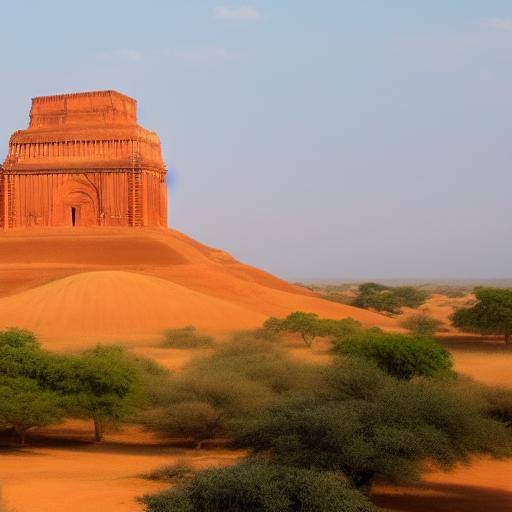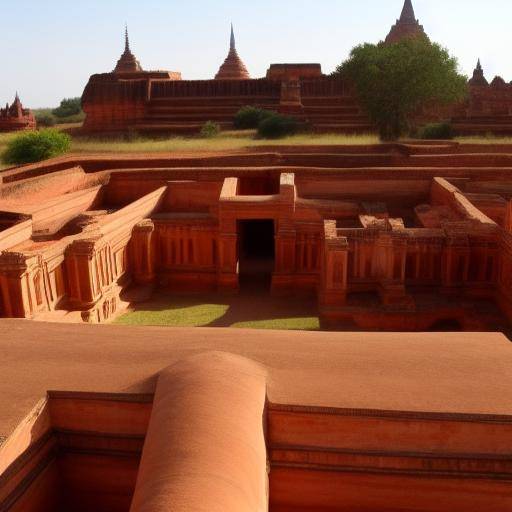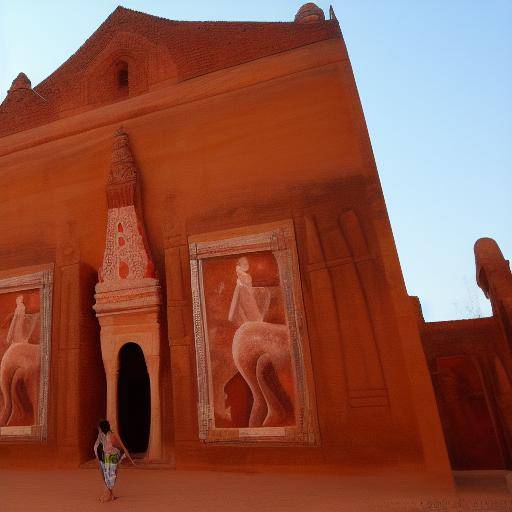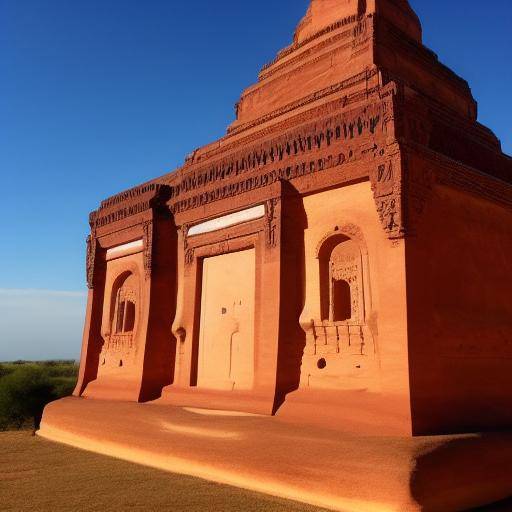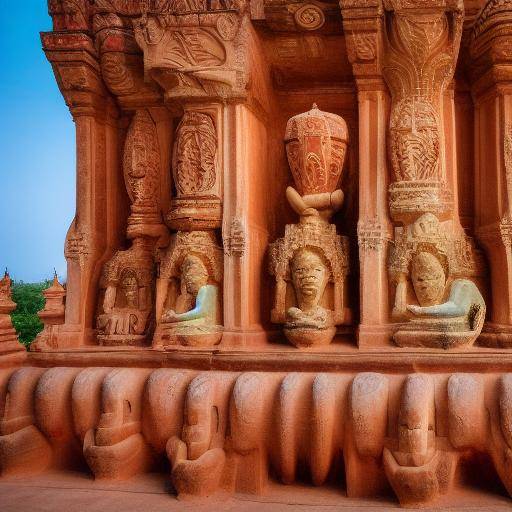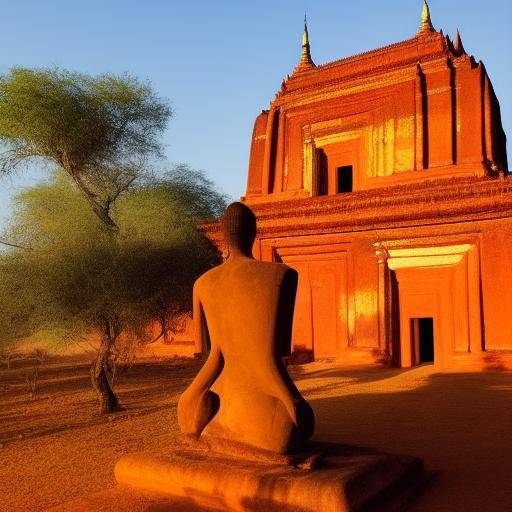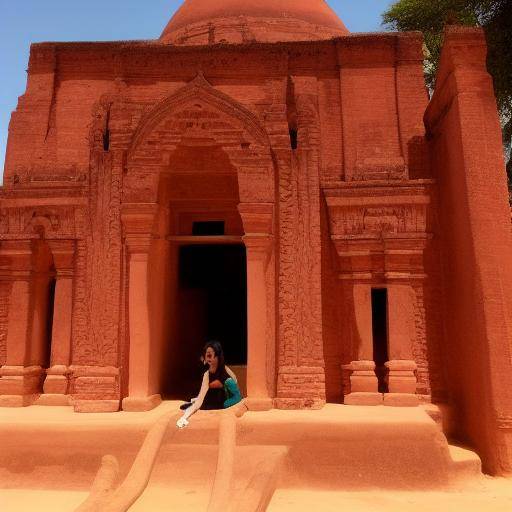
The temples of Bagan, located in the heart of Myanmar, offer a fascinating look at the rich history and profound spirituality of the region. This ancient city, known for its impressive temples and stupas, is a testimony of the architectural grandeur and religious devotion that has defined Myanmar over the centuries. In this article, we will explore the history of the temples of Bagan, its cultural and religious importance, and its impact on the architectural heritage of Southeast Asia.
Introduction
The temples of Bagan, scattered along the arid plains of the central region of Myanmar, are an architectural and religious treasure dating from the 11th to 13th centuries. This extensive archaeological area houses more than 2,000 structures, ranging from imposing temples to modest stupas, each with its own history and meaning. As we enter into the history of the temples of Bagan, we will discover the influence of Buddhism on the architecture and daily life of its inhabitants, as well as its impact on the history of Myanmar.
History and Transcendence
Origins of the Temples of Bagan
The temples of Bagan have their roots in the reign of King Anawrahta, who unified the kingdoms of Myanmar and adopted theravada Buddhism as the official religion in the eleventh century. Under their sponsorship, thousands of temples and staples were built on the Bagan Plain, making it a centre of Buddhist devotion and learning. The architecture of the temples reflects the influence of the predecessor dynasties as well as the religious currents from India.
Evolution throughout the century
Over the centuries, the temples of Bagan have witnessed numerous historical events, from internal conflicts to British colonization. Despite the vicissitudes, religious devotion and care of these monuments by the local community have preserved much of its original splendor. The restoration of some temples demonstrates Myanmar ' s commitment to the preservation of its cultural and religious legacy.
Recommended reading: The impact of religious architecture on the cultural identity of Myanmar
Deep analysis
Cultural and Religious Relevance
The temples of Bagan are not only important from an architectural point of view, but also play a crucial role in the practice and teaching of Buddhism in Myanmar. The adjacent monasteries often serve as centers of study and meditation, attracting faithful and academics from around the world. This religious heritage is a pillar of the cultural identity of Myanmar, with the temples of Bagan as a tangible testimony of the faith and devotion of the Burmese people.
Conservation and Tourism Challenges
The growing tourist interest in the temples of Bagan has raised challenges in terms of conservation and management. As the flow of visitors increases, questions are raised about the preservation of the environment and the need for sustainable tourism. The Myanmar authorities face the challenge of balancing the preservation of these sites with the legitimate desire to share their rich cultural heritage with the world.
Current Trends and Futures
Conservation and sustainable development efforts are ongoing, with initiatives to protect Bagan temples from irreparable damage and to promote responsible tourism. The promotion of cultural education and environmental awareness among the local population and visitors is critical to ensuring that Bagan temples remain a lasting legacy for future generations.
Archaeological site of the temples of Bagan.
Comparative analysis
Bagan vs. Other Archaeological Sites in Southeast Asia
The magnificent temples of Bagan are often compared to other archaeological sites in Southeast Asia, such as Angkor Wat in Cambodia. While they share similarities in their architectural splendour and religious importance, each has unique characteristics that reflect the different cultural and religious influences that have shaped the region over the centuries.
Bagan and his Circle with Burmese History
The temples of Bagan are not only a testimony of the architectural and religious grandeur, but they are also intrinsically linked to Burmese history. The influence of Buddhism in the daily life, politics and arts of Myanmar is evident in the architecture and rituals associated with the temples of Bagan. This historic connection provides a profound view of Myanmar ' s identity and cultural evolution over time.
Practical Tips and Accessible Recommendations
Responsible Visit to the Temples of Bagan
If you plan to visit the temples of Bagan, it is crucial to adopt responsible practices to preserve this heritage. It respects local standards, prevents damage to monuments and supports local sellers. In addition, it considers contributing to conservation projects or organizations that promote sustainable tourism in the region.
Participation in Cultural and Religious Events
To immerse yourself in the culture and spirituality of Myanmar through religious festivals or ceremonies is a unique opportunity to appreciate the relevance of the temples of Bagan in the life of the Burmese people. By participating in these experiences, not only is personal knowledge enriched, but also contributes to the continued support of the local community.
Industry Perspectives and Expert Reviews
Understanding the Global Impact of Bagan Temples
Experts on cultural heritage and archaeology recognize the uniqueness of Bagan temples and their contribution to world heritage. The preservation of these monuments goes beyond the borders of Myanmar: it is a commitment to the conservation of the human legacy that transcends generations and continents.
Challenges and Opportunities in Site Management
Professionals in sustainable tourism and heritage conservation share their vision on how to address current challenges in the management of Bagan temples. The creation of multi-sectoral alliances and the promotion of environmentally friendly practices are critical to preserving this cultural treasure.
Case Studies and Practical Applications
Inspiring Conservation Experiences
Cases of success in the restoration and preservation of temples in Bagan offer valuable lessons on the importance of community cooperation, technological innovation and long-term commitment. These inspiring stories show that the preservation of cultural heritage is an effort that involves society as a whole.
Future Trends and Predictions
Lifting the Sustainability Standard
Emerging trends in cultural tourism aim at a more sustainable and ethical approach, where conservation of the heritage and well-being of local communities are key priorities. Bagan temples are expected to be a benchmark in this evolution, leading the path to responsible cultural tourism in the region.
Innovation in Interpretation and Dissemination of Knowledge
The integration of innovative technology and outreach practices will contribute to the global dissemination of the legacy of Bagan temples. Through interactive tools and immersive experiences, new forms of understanding and appreciation for this unique historical heritage will be opened.
Conclusions and FAQs (FAQs)
Conclusions
The history of the temples of Bagan is a journey that takes us through centuries of architectural grandeur and religious devotion. From their humble origins to their present role as an important archaeological and spiritual site, the temples of Bagan remain a lasting legacy that captivates those who have the fortune to explore them. With a profound cultural significance, these temples transcend their local importance to inspire and enrich the lives of people around the world.
Frequently asked questions (FAQs)
What is the importance of the temples of Bagan in the history of Myanmar?
The importance of the temples of Bagan lies in its role as a centre of Buddhist devotion and its influence on the cultural identity of Myanmar. These temples have witnessed the evolution of the region over the centuries and continue to be a lasting symbol of the architectural and spiritual grandeur of Myanmar.
What are the current challenges in the preservation of Bagan temples?
The current challenges in the conservation of the temples of Bagan include the management of sustainable tourism, the preservation of the ancient architecture and the protection of the natural environment surrounding the temples. The delicate balance between promoting access to these sites and ensuring their long-term preservation is a critical issue in managing these cultural treasures.
What measures are being taken to ensure the long-term preservation of Bagan temples?
Measures are being implemented to promote sustainable tourism that minimizes the impact on temples and their environment. In addition, conservation and restoration projects are being carried out to ensure the structural integrity of the temples, as well as to preserve their decorative and artistic elements.
How can I contribute to the preservation of Bagan temples during my visit?
Visitors can contribute to the preservation of Bagan temples by adopting responsible practices, supporting the local community through ethical shopping and respecting local norms and regulations. In addition, considering contributing to conservation organizations or local projects can make a significant difference in the long-term preservation of this cultural heritage.
What is the role of the temples of Bagan in the daily lives of the inhabitants of Myanmar?
The temples of Bagan have a profound impact on the daily lives of the inhabitants of Myanmar, serving as centers of religious practice, spiritual reflection and cultural celebrations. The influence of Buddhism in the social, political and artistic life of Myanmar is intrinsically linked to the presence of these temples.
How can you promote responsible tourism in the temples of Bagan?
Promoting responsible tourism in the temples of Bagan involves educating visitors about the importance of respecting local norms, preserving the natural environment and supporting the local community. Encouraging environmental and cultural awareness is essential to ensuring that these sites remain in their splendour for future generations.
With its rich history, profound spirituality and magnificent architecture, the temples of Bagan continue to captivate those who seek to explore the cultural and religious wealth of Myanmar. His lasting legacy transcends time and space, offering a window to the past and a beacon of inspiration for the future.

